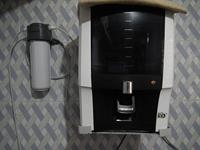
PUMPA - SMART LEARNING
எங்கள் ஆசிரியர்களுடன் 1-ஆன்-1 ஆலோசனை நேரத்தைப் பெறுங்கள். டாப்பர் ஆவதற்கு நாங்கள் பயிற்சி அளிப்போம்
Book Free DemoOnly 1% of the total freshwater is available in water bodies like rivers and lakes, and the rest is frozen in glaciers and polar regions.
Since it contains suspended and dissolved contaminants, the water from these bodies of water is not safe for drinking, cooking, washing or bathing. It also includes bacteria and other microorganisms. Water-borne diseases such as typhoid, diarrhea and cholera can be spread if this water is consumed without being purified. Thus, before it reaches our home, water should be treated and purified. Water is purified in typical water treatment plants using a variety of techniques.
Water purification process involves
- Sedimentation
- Filtration
- Sterilisation
Sedimentation
Large sedimentation tanks collect water from lakes and rivers. Then, it is left unused there to allow suspended impurities to settle to the bottom of the tank. A chemical compound like potash alum is sometimes added to the water to speed up the sedimentation process. This process is called Loading. Potash alum particles react with suspended impurities and enable them to settle more quickly.
Filtration
Filtration tanks contain gravel, sand, pebbles, activated charcoal and concrete filter beds. Water is pumped from the sedimentation tanks to the filter tanks. As water flows through these layers, any leftover dissolved or suspended impurities are fully removed.
Sterilisation
To remove any leftover germs or bacteria, the filtered water is chemically treated. This process is called Sterilisation.
Chlorine and ozone are the chemicals used in this process. The filtered water is pumped into chlorination tanks, where chlorine is added to kill harmful bacteria and other pathogens.
It is also possible to sterilise water by exposing it to air and sunlight. The bacteria in the water are destroyed by oxygen from the air and sunlight. Aeration is the process of blowing compressed air into purified water. It also helps in the destruction of microorganisms.

Water treatment stages

RO purifier
You might have seen this kind of water purifier at home. This is an RO purifier. RO purifiers can remove dissolved impurities and germs. They also make water taste better. RO stands for reverse osmosis, which is the technology used in these purifiers. Some RO purifiers have a UV (ultraviolet) device that destroys bacteria in the water.